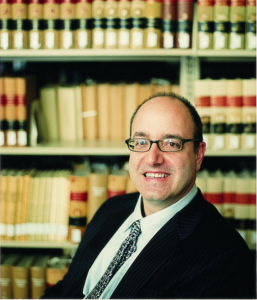From the Dean

A few weeks ago, I greeted this year’s class of incoming students. They were anxious, as first years always are, but this year’s jitters were about more than the Socratic Method. That morning, The New York Times had published the latest in a stream of articles describing the economic woes of large law firms—and, with them, the supposedly diminishing prospects of graduates from elite law schools. These stories have surprised me because I thought everyone had agreed long before the economy collapsed that the system funneling students to these firms was broken and needed to change. • Of course, “big law” is not about to disappear (though it does seem likely to become a bit less big). And that’s a good thing: The mega-firms do valuable work, and, for the right people, they are wonderful places to make a career. They have great lawyers, and they work with influential clients on interesting and important cases and transactions. For many, they are the right choice. • Just not for everyone. If there has been a problem, it’s that too many of our graduates have gone to these firms for the wrong reasons—with predictable results, including boredom, frustration, and early lateral movement. The tendency of students from elite schools to go disproportionately to large firms is not new, but it has become considerably more pronounced in recent years. There is a conspicuous difference between what Stanford graduates did right out of law school 25 years ago and what they do today. Many went to big firms even then (though, at the time, “big” was measured in hundreds rather than thousands). But they also went to medium firms and small firms and new firms. Sometimes they started their own firms. And they went, in appreciable numbers, to smaller markets, like Seattle, Boston, Phoenix, and Dallas. Today, only a trickle makes such choices.
What happened? To begin, the big firms adopted a business model that leverages billable hours to maximize profits by utilizing large numbers of low-level associates. To attract people the firms started to offer stunningly high salaries—while depending on most new associates to leave voluntarily after three or four years. Law schools contributed by failing to arm students with knowledge they could use to make a different choice. Big firms came to dominate the on-campus interview process, much as they dominate the profession. And except for students interested in government and public interest work, we did too little to make alternatives easy for students to find. That failure, notably, included failing to prepare students to do much more than the sort of work performed by new associates at big firms.
Be all that as it may, still it has been the graduates themselves making this choice. They believe they are playing it safe: going to a big firm to get some basic training and pay down debt while biding their time until they find a job they actually want.
Student loans play a part here, but they do not compel this choice. For while debt burdens have risen, salaries have risen faster, and there are still countless jobs graduates might take that would permit them to pay their debt while living well. It’s a trade-off students make: a choice to start their careers with higher pay but lower job satisfaction at firms that add another prestigious line on a resume while making it possible to put off for a few more years deciding what they really want from their career. (This trade-off is particularly attractive to today’s star students, who have been taught from a very early age that the way to succeed is to collect gold stars while keeping one’s options open.)
We know the trade-off hasn’t worked well for many, if not most, of those who make it. So, if the economic downturn shrinks the big firm market enough to force students to consider a wider range of jobs, that’s a good thing. We should be pleased if the graduates who go to big firms are only those who actually want a big firm career. It’s unfortunate that it took an economic calamity to force a change, but the change—if it occurs—might well be for the better.
The law school bears a heavy responsibility to help. We have, as you know, been changing our curriculum for the past several years to prepare students better to hit the ground running. We have also changed career services to give students more and better information about a wider range of opportunities. Now we need to push students not to wait until after graduation to begin deciding what kind of career they want and how to get there. That way of “playing it safe” isn’t safe at all. Nor does it make for a fulfilling professional life.
